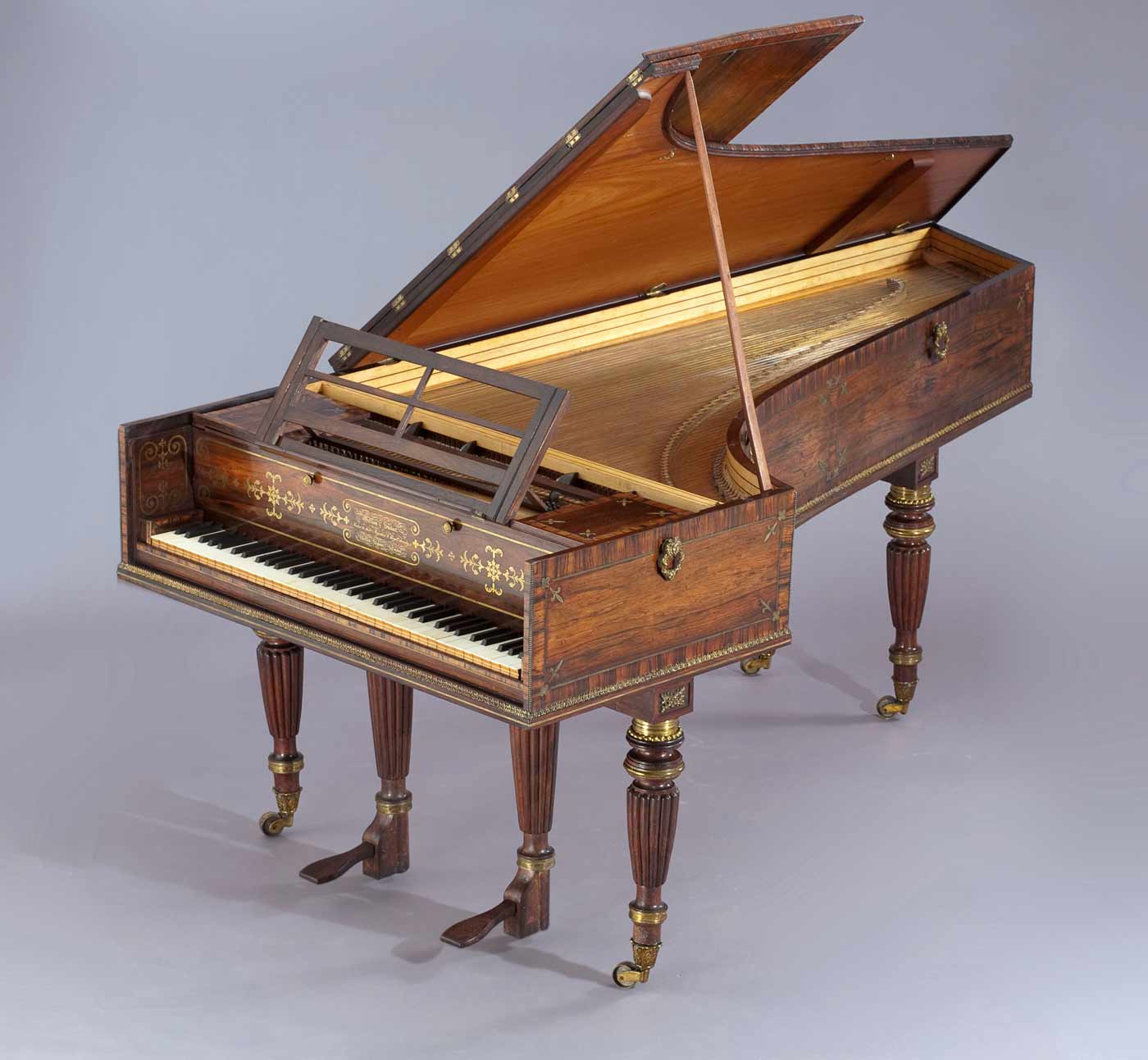At Colonial Williamsburg, you can experience the full life cycle of a harpsichord in one visit. From the making of this 18th-century instrument at the Cabinetmaker and Harpsichord Maker shop, to hearing musicians play music on its keys, to pieces in our collection, which will soon be on exhibition at the expanded and updated Art Museums of Colonial Williamsburg.
1.The term harpsichord refers to a whole family of instruments — including large ones (generally just called harpsichords) as well as smaller examples like virginals and spinets.
2. The piano and the harpsichord existed concurrently for most of the 18th century. The piano was invented in Florence at the very beginning of the 18th century. However, pianos were not widely popular or generally available for purchase until much later in the century.
3. The harpsichord operates differently than a piano. A piano produces sound with a hammer pounding a string or strings rather than a quill plucking a string when a key is depressed. A piano can produce different gradations of loudness or softness when pressing a key (depending on the velocity of key movement), and a harpsichord cannot.

4. Residents here in Williamsburg are known to have owned harpsichords in the 18th century — including the Geddy family and Governor Fauquier.
5. Some of the inner-working parts of a harpsichord are made from animal products —including pieces of crow quills, which are used to pluck the strings, and boar bristles, which act as little springs and allow the wooden tongue holding the quill to swivel the quill out of the way on the back down/passing back underneath the string.
6. The soundboard of a harpsichord serves to amplify the sound when a string is plucked.
7. Larger harpsichords, in addition to having a second choir of strings, sometimes had a third choir of strings which plucked an octave higher, and also sometimes had a second keyboard — that style of instrument is called a double-manual harpsichord.
You can hear the harpsichord, among other 18th-century instruments each Wednesday this month at the Art Museums of Colonial Williamsburg as members of our Governor’s Musick Ensemble share period music with you.
Keyboard instrument specialist Daniel Corneliussen studied harpsichord and early music with Professor Arthur Haas at the State University of New York at Stony Brook. Daniel graduated from Stony Brook in 2015 with a Doctor of Musical Arts degree. Daniel also has a degree in piano performance (Bachelor of Arts from Virginia Tech, 2005) as well as a Performer Diploma in organ (Indiana University, 2012). Daniel is especially interested in 17th-century European music but loves to play a wide variety of styles of music.
Colonial Williamsburg is the largest living history museum in the world. Witness history brought to life on the charming streets of the colonial capital and explore our newly expanded and updated Art Museums of Colonial Williamsburg, featuring the nation’s premier folk art collection, plus the best in British and American fine and decorative arts from 1670–1840. Check out sales and special offers and our Official Colonial Williamsburg Hotels to plan your visit.
